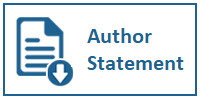MACROECONOMIC ANALYSIS OF THE INDONESIAN NICKEL INDUSTRY USING DEPEST ANALYSIS
DOI:
https://doi.org/10.31937/manajemen.v14i2.2933Abstract
Abstract- The global push to accelerate the electric car industry is expected to increase world demand for nickel until 2030. Indonesia is the largest producer, with a Nickel production of 800,000 tons, or 30% of the world supply. The Indonesian government then responded to this global situation by issuing a law banning the export of 1.8% low-grade Nickel, in line with its policy of accelerating the national Strategic Project (PSN), focusing on nickel downstream (besides downstream other minerals and coal) to increase added value to strengthen the competitiveness of the national nickel industry on an international scale, suppressing imports and also creating energy independence. In an effort to achieve this downstream, it is necessary to carry out a macroeconomic analysis of the various opportunities and challenges faced in developing the Indonesian Nickel industry. This external analysis is the analysis Demography factors, Economy, Political, Ecological, and Social Technology (DEPEST). The results show: 1) Southeast Sulawesi has a demographic bonus with a low unemployment rate and the potential to be trained in trade and mining. 2) In terms of economic factors, Southeast Sulawesi Nickel has quite large reserves, and the LQ showed that the mining and quarrying sector has the highest comparative advantage compared to other basic sectors. 3) So far government regulations are accelerating the provision of added value to domestically manufactured products by relying on domestic raw materials. 4) The impact on socio-culture is to increase the community's welfare around the mining area as long as it is carried out while maintaining environmental sustainability. 5) There is a promising technology for downstream Nickel.
Keywords: Nickel Industry; Smelter; DEPEST Analysis
Downloads
Downloads
Published
How to Cite
Issue
Section
License
Authors retain copyright and grant the journal right of first publication with the work simultaneously licensed under a Creative Commons Attribution-ShareAlike International License (CC-BY-SA 4.0) that allows others to share the work with an acknowledgement of the work's authorship and initial publication in this journal.
Authors are able to enter into separate, additional contractual arrangements for the non-exclusive distribution of the journal's published version of the work (e.g., post it to an institutional repository or publish it in a book), with an acknowledgement of its initial publication in this journal.















